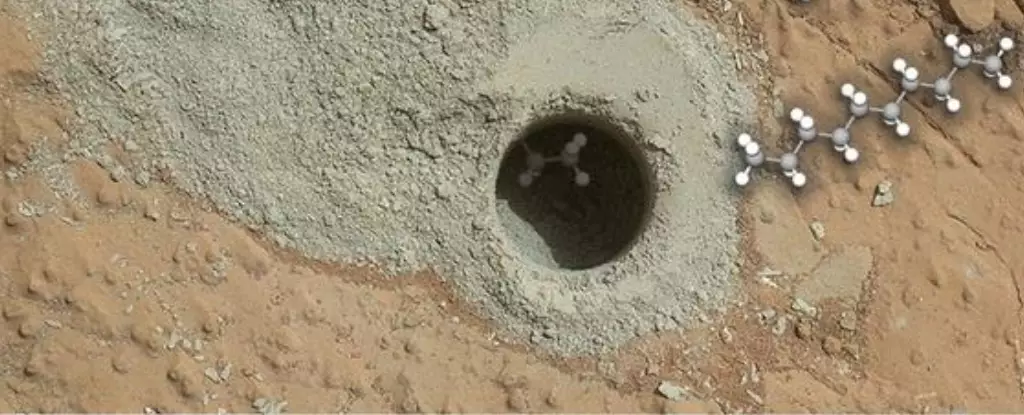Recent discoveries on Mars have pushed the boundaries of our understanding of the planet, reigniting the debate about the potential for life beyond Earth. The detection of carbon chains comprised of up to a dozen carbon atoms by NASA’s Curiosity rover sheds light on the complex chemistry that might have once existed in Martian lakebeds. These findings are more than just numbers and formulas; they represent a tantalizing glimpse into a world that may have harbored life forms in its distant past or might still harbor them in mysterious, hidden niches.
This discovery was led by a team of researchers, spearheaded by analytical chemist Caroline Freissinet from the French National Centre for Scientific Research. Utilizing sophisticated sampling instruments, the Curiosity rover has confirmed the presence of long organic molecules, compelling us to reconsider our assessments of Martian geology. But it is crucial that we strike a balance between excitement and skepticism. While these compounds may have been formed through non-biological means, their very existence invites speculation about the complex interactions possible on ancient Mars.
Curiosity: A Pioneer in Astrobiological Research
The primary mission of the Curiosity rover—discerning whether Mars once supported life—has not only increased our knowledge of the planet but filled the scientific community with hope. It has traversed the Gale Crater region, uncovering an array of organic materials that point towards a rich and intricate history. The quest to comprehend these findings offers a new perspective on what defines life-sustaining environments.
Recent evidence has revealed various chlorinated and sulfur-containing organic compounds, hinting at even more complex biosignatures potentially lying in wait within Martian sediments. Each new discovery adds to the tantalizing mystery of whether life ever existed on our neighboring planet or if it could exist in some form today. Such optimistic inquiries must, however, be accompanied by rigorous scientific scrutiny; the implications could reshape our understanding of life itself.
The Science Behind the Findings
The analytical techniques employed by the researchers showcase the ingenuity of current scientific practices. By utilizing advanced gas chromatography and mass spectrometry, they subjected samples extracted from the Cumberland mudstone to extreme heat—around 850 °C (1,562 °F)—to analyze long carbon chains, including decane, undecane, and dodecane. This process reveals the potential for complex organic chemistry on Mars, but it also highlights the limitations of our current methodologies; our tools are scratching the surface of a vast Martian enigma.
Despite the groundbreaking nature of these experiments, we must temper our enthusiasm with caution. The fact that these compounds can be produced by non-living processes suggests that not every remarkable discovery is indicative of life. The possibility that simpler molecules could form these more complex structures without biological assistance should not be overlooked. However, this does not dampen the excitement surrounding the chase for signatures of life; rather, it adds layers to the conversation and underlines the need for continued investigation.
Future Implications: The Road Ahead
Although the findings are significant, they merely mark the beginning of a long road towards understanding Mars’s biological prospects. For every advancement in our planetary exploration, more questions arise. Could these carbon chains be remnants of ancient life, or are they simply chemical anomalies? The lingering uncertainties fuel an intense debate that may very well shape future missions to Mars.
Our current and upcoming missions must evolve based on findings like these. Expanding our understanding not only necessitates more sophisticated instruments but also collaborative international efforts to retrace the timeline of Martian habitability. There is a fine line to tread between optimism and scientific rigor; the charms of possibility must be matched by decisive action that seeks concrete answers rather than mere conjectures.
Despite the uncertainties and challenges ahead, the existence of potential biosignatures remains awe-inspiring. The truth may be far more complex than a simple test for life; we might be on the verge of uncovering the intricate web of chemical relationships that could tell us not just about Mars, but about the very nature of life across the cosmos.


Leave a Reply